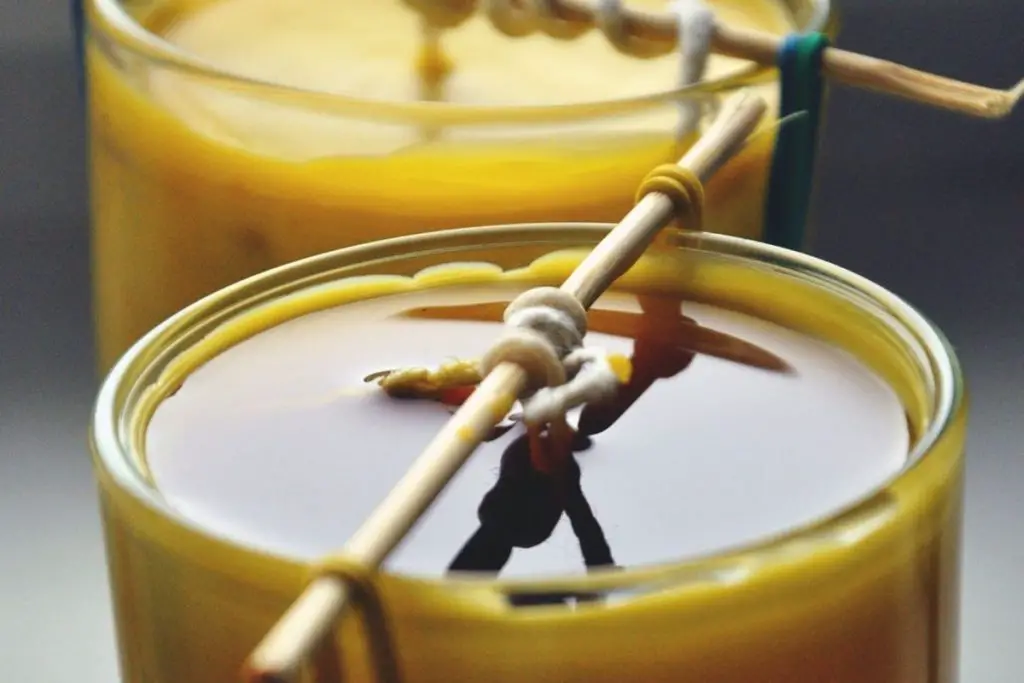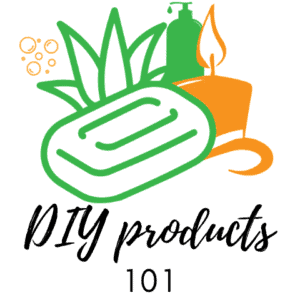Dive into the enigmatic world of candle-making, where mastery over temperature paves the path to perfection. Discovering the precise temperature at which different candle waxes melt is a fundamental step toward crafting your initial set of candles. This guide sheds light on candle waxes and their melting points, guiding you through the ideal temperatures for adding fragrances, pouring, and avoiding the dreaded Flashpoint.
Candle wax starts to melt at the low-end (Soy candle wax) at 120°F and on the high-end (beeswax candle wax) at 149°F. Candles may also melt inside a hot car or when left for prolonged exposure to direct sunlight.
Do you dream of creating your own beautifully scented candles that put store-bought ones to shame? Are you tired of feeling envious of those who effortlessly craft stunning candles for their homes or businesses? If so, we have the perfect solution for you! Candle Making 4 You™ is a comprehensive step-by-step guide that will turn you into a master candle maker – whether you’re a complete beginner or an experienced hobbyist. This system will teach you everything you need to know to create candles that look professional and smell amazing.
The candle market used only one type of wax, but with so many different options available today, it’s no wonder that people are confused. This article will discuss all the major types, including different candle wax types and their melting points, the ideal temperature to add your fragrance, at what temperature you should pour, and Flashpoint temperatures.
What temperature does candle wax melt?

The melting journey of candle wax begins between 75 – 200°F, primarily hinging on the specific type of wax in question. Before unraveling the intricacies, it’s crucial to acknowledge a temperature threshold your candle should never surpass.
Heating candle wax beyond 200°F could lead to discoloration, rendering it unusable. Thus, employing a thermometer while melting the wax is a wise practice as it reveals the exact temperature, averting potential mishaps. However, this doesn’t eliminate the possibility of candle-making without a thermometer.
Always be vigilant; leaving melting wax unattended or failing to stir it periodically could result in localized heating of the oils, risking a burnt outcome.
Can candles melt in the heat?
Candles begin to surrender to the heat once temperatures soar above 104°F. While natural wax candles might valiantly resist up to 103°F, they will eventually succumb, losing shape and gradually melting, especially under the relentless gaze of direct sunlight. Consequently, many candle makers shield their creations in cool, dark sanctuaries.
Can Candles Melt in a Hot Car?
Candles within the confines of a hot car face a melting fate when temperatures escalate between 130 to 170°F, with the wax type playing a significant role in determining the exact melting point, which ranges from 99 to 145°F.
Will Candle Wax Melt in The Sun?
A fleeting encounter with sunlight might not spell doom for your candle wax. However, in a car, coupled with sunlight’s relentless rays, the meltdown commences, especially for soy or coconut wax.
What candle wax has the highest melting point?
Highest Melting Point: Beeswax reigns supreme with a melting point of 144-149℉, necessitating a large square braid wick to foster a robust flame.
What candle wax has the lowest melting point?
Lowest Melting Point: The debate rages on; some argue soy wax, melting between 120 and 180°F, holds this title, while others champion coconut wax with its 75 to 100°F range.
Note: Lower melting points hasten the drying process, illuminating why your wax might be drying rapidly.
Can I melt candle wax on the stove?
Yes, melting candle wax on the stovetop is a common and reliable method, often endorsed by many candle artisans. The double boiler method is the recommended approach for stovetop melting as it provides a controlled, indirect heat to the wax, preventing it from overheating or reaching its flashpoint.
What is the best way to melt candle wax?
Treading cautiously is imperative during the candle wax melting saga as the flammability threshold of most candle waxes lurks around 400°F. Achieving a safe yet elevated temperature is attainable on your stovetop, making it a favored and commonplace avenue for wax melting.
Wax warmers offer an alternative, especially for repurposing leftover wax. However, exercise caution to avoid overuse, which could become a fire hazard.
You can technically also melt wax in a wax warmer, but there are a few things you need to do for it to work. Usually, you would want to do this if you have leftover wax and don’t know what to do with it. Using a wax warmer might be one way to use leftover wax, but just make sure not to overuse it, as it might be a fire hazard if left on for too long.
Double Boiler Method: This preferred technique among candle makers involves a straightforward process. A pot filled with water is brought to a boil, achieving a temperature of 212°F. It’s crucial to maintain this temperature to ensure safe melting.
A pouring pot containing the candle wax is placed on top of the boiling pot. The steam generated, along with the boiling water, gradually melts the wax without direct contact with the flame, thus eliminating the risk of combustion. A reliable thermometer is essential to accurately monitor the wax temperature, ensuring it remains within the safe melting range.
What temp does Soy wax melt at?
The melting point for Soy wax ranges from 120 to 180°F, depending on the blend. Soy wax is a product of the complete hydrogenation of soybean oil. It is 100% biodegradable as compared to Paraffin, which is inorganic.
Flashpoint:
The flashpoint of soy wax is specific to the manufacturing process and varies with the blend. Typically, it can be on the higher side, which is 450°F. For safety purposes, read the labels thoroughly. Similar to wax, fragrance oil also has a flashpoint.
Fragrance:
Pouring temperature:
To reduce cracking and increase the cure time of Soy wax, the suggested pouring temperature is 120 -165°F. Pour the wax into the container at the right temperature to avoid wax spoilage.
What temperature does Beeswax melt at?
The Beeswax melts at the range of 144 to149°F. As stated above, Beeswax is a hard wax. To soften it, Chandler suggests adding coconut oil with a melting point of 77°F.
Flashpoint:
The flashpoint of Beeswax is between 490 to 525°F. The right pouring temperature for Beeswax is 155-160°F.
Fragrance:
In the case of fragrance addition, bringing wax to a higher temperature than its melting point is essential. It helps wax molecules expand fully and completely encapsulate the fragrance molecules. The ideal temperature to add fragrance oil to melted Beeswax is 160-165°F.
Pouring temperature:
The ideal pouring temperature for Beeswax is 160-165°F, which means you can basically pour and add your fragrance simultaneously.
What temp does Paraffin wax melt at?
Paraffin, the most commonly used candle wax, melts from 122 to 158°F. It is often preferred because of its high versatility and ability to mold in any shape. When adding fragrance oil to Paraffin, the temperature suggested by the experts is between 180-185°F.
Flashpoint:
The flashpoint temperature of paraffin wax is around 392 to 464°F.
Fragrance:
The ideal temperature to add fragrance to Paraffin wax is 180°F.
Pouring Temperature:
The average temperature when pouring paraffin wax into a container is between 170°F-180°F.
What temp does Coconut wax melt at?
Coconut wax is often a new thing for beginner candle makers. But it is one of the most astonishing wax types derived from pure coconut oil. Also, extra virgin coconut oil is not at all recommended to make this wax. Experts state that blending coconut oil with other natural oils of high quality will produce wax with a high melting point. Coconut wax has a varying melting point, with some sources indicating a range of 75 to 100°F, while others suggest a higher range of 124 to 127°F.
Coconut wax, which undergoes the hydrogenation process during wax-making, has a higher melting point compared to pure coconut oil.
Flashpoint:
In terms of flashpoint, this wax has the lowest flashpoint temperature among all waxes, which is around 350°F. So, working with care is essential when you have Coconut wax.
Fragrance:
The optimum fragrance oil adding temperature for Coconut wax is 130 °F.
Pouring:
Last but not least, ideal pouring temperatures are around 110-130 °F.
What temp does Rapeseed wax melt at?
A 90% pure Rapeseed wax quickly melts at a temperature range between 125 to136°F. Being another plant-based wax, Rapeseed wax is a viable option if someone is seeking to buy all-natural ingredients for candle making.
Flashpoint:
Canola wax, another name given to Rapeseed wax, has a high flashpoint of over 400°F. (Canola wax is another term for Rapeseed wax, deriving from the same plant source.)
Fragrance:
For adding fragrance to Rapeseed wax, a temperature between 131°F and 140°F is ideal.
For adding dye, attaining a temperature around 158°F is good enough. This is because a few solid dyes melt within this temperature range.
Pouring temperature:
When you make Rapeseed candle wax, the last stage is wax pouring. You need to set the temperature at 113°F to pour the wax into the container quickly.
What temp does Palm wax melt at?
Palm wax, Carnauba wax, and Brazil wax are different, each deriving from unique plant sources. Derived from the Carnauba palm leaves, Palm wax has a high melting point of 140°F. It is an odorless hard wax with a flashpoint temperature of 390.2°F.
Flashpoint:
Palm wax has a flashpoint that is 390.2°F
Fragrance:
Palm wax is famous for dispersing and holding fragrances far better than other wax types. Simply add your favorite fragrance oil between 190-210°F. Once you hit 210°F, adding color and aroma to the wax is entirely safe.
Pouring temperature:
The ideal pouring temperature for Palm wax is anywhere above the range of 185-195°F.
Candle Wax Melting Point Chart
| Wax Type | Melting Point | Flashpoint | Fragrance Addition Temperature | Pouring Temperature |
|---|---|---|---|---|
| Soy Wax | 120 to 180°F | Around 450°F | 180-185°F | 120 -165°F |
| Beeswax | 144 to149°F | 490 to 525°F | 160-165°F | 160-165°F |
| Paraffin Wax | 122 to 158°F | 392 to 464°F | 180°F | 170°F-180°F |
| Coconut Wax | 75 to 100°F (Alternate: 124 to 127°F) | Around 350°F | 130 °F | 110-130 °F |
| Rapeseed Wax | 125 to136°F | Over 400°F | 131°F to 140°F | 113°F |
| Palm Wax | 140°F | 390.2°F | 190-210°F | 185-195°F |
